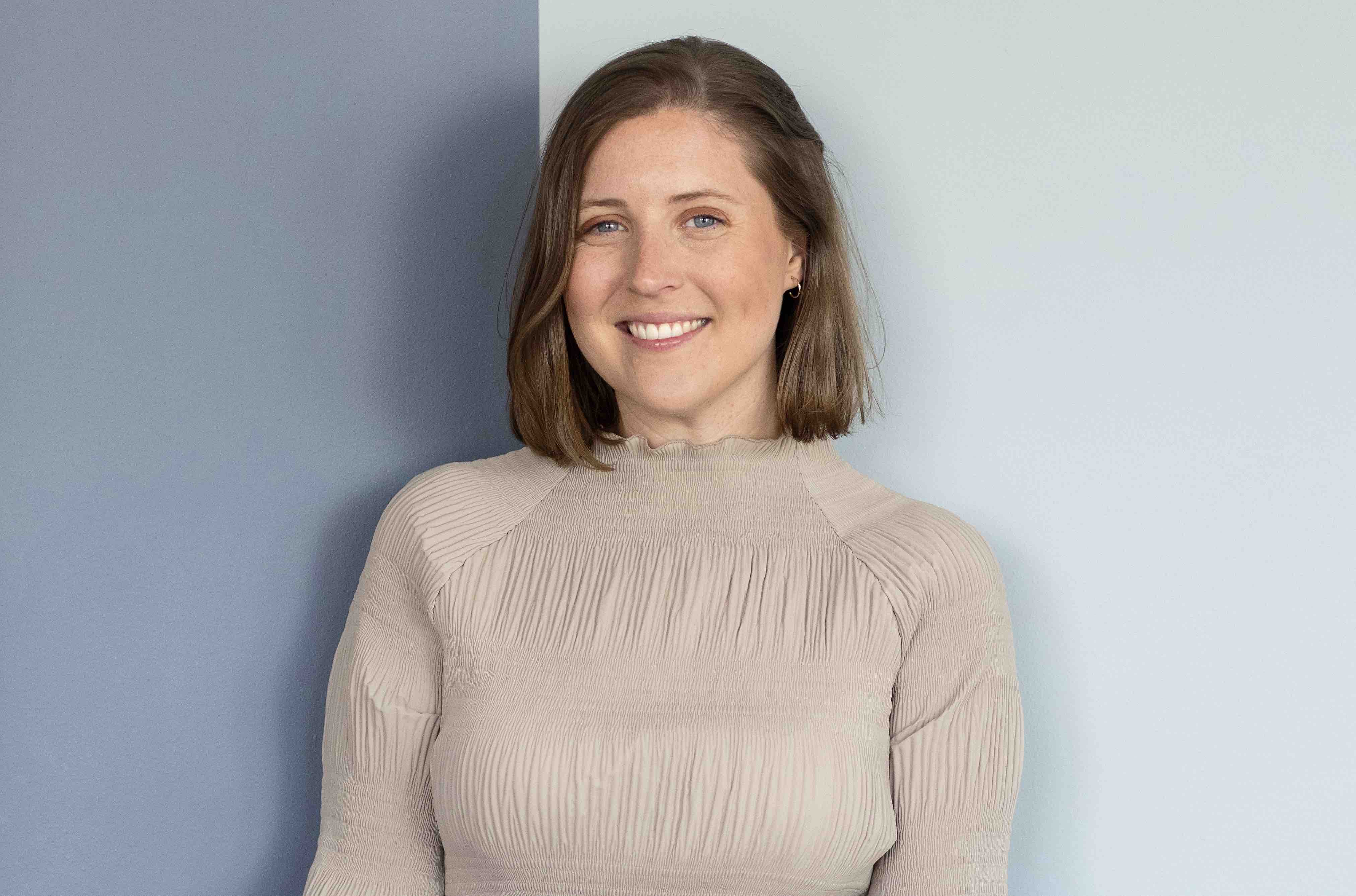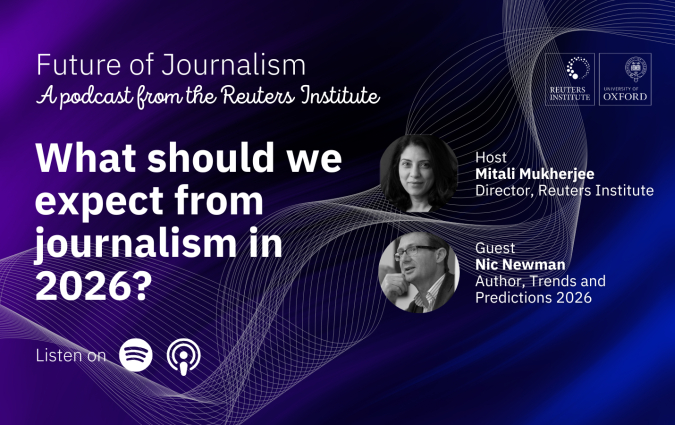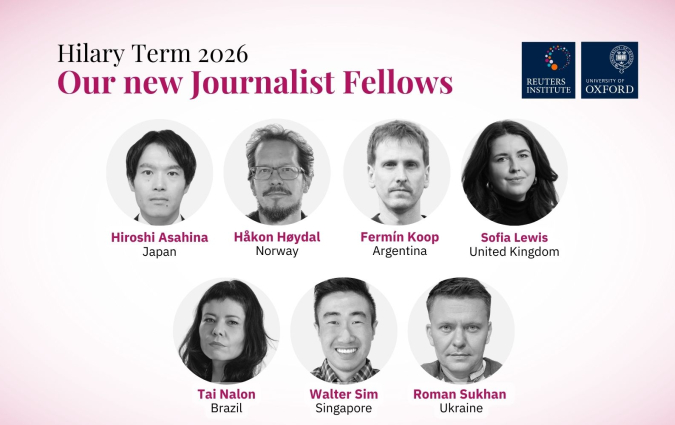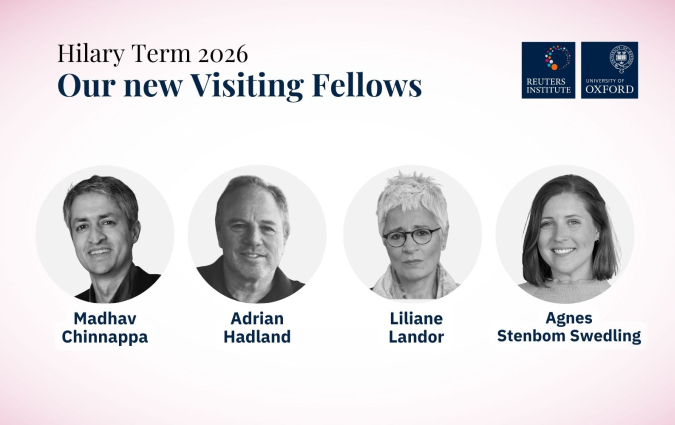AI expert Agnes Stenbom: “We need to better tell our users how journalism is different from other forms of information”

Agnes Stenbom, head of IN/LAB, an initiative by Schibsted and the Tinius Trust.
Nordic newsrooms are at the forefront of experimentation on AI and the future of news. With its emphasis on experimentation and knowledge-sharing, the Nordic AI Journalism network connects all kinds of news organisations from the region. It helps them explore the role AI should play in the next few years.
Agnes Stenbom's work is both outward and inward-looking. She is a co-founder of Nordic AI Journalism and co-organiser of its Nordic AI in Media Summit and is also delving into research and exploration of AI, trust and catering to hard-to-reach audiences for Schibsted Media Group, a large, private media conglomerate operating in the Nordic region.
Stenbom and Olle Zachrison, head of AI and news strategy at Swedish Radio, founded the Nordic AI Journalism network in 2020 to foster the sharing of ideas, experimentation and cooperation between media companies engaging with AI and operating in the Nordic region, a group comprising Denmark, Finland, Iceland, Norway and Sweden, as well as smaller autonomous territories. Since 2023, the network has organised the Nordic AI in Media Summit. a yearly conference that presents the work of colleagues from across the region and beyond.
Stenbom is also the founder and head of IN/LAB, an initiative by Schibsted and the Tinius Trust, the company’s largest shareholder, exploring innovation for ‘news outsiders’, which the team defines as ‘various groups not consuming and/or trusting editorial news today.’
I asked Agnes Stenbom about her work in the field of AI and journalism, what led her to start the Nordic AI Journalism network, and how she views this current moment in newsroom AI innovation.
Q. You’ve been working on and thinking about AI in the news for a while. When did you start and how did you get into it?
A. I started working with AI in 2018. At that time I was working as a technology trend analyst for Schibsted and focused specifically on risks related to issues of algorithmic bias. In that role, I hosted training sessions for hundreds of Schibsted employees, including our then-executive management team, on ensuring that we built and used AI systems that were fair to our diverse user bases. After a short stint in product management in machine learning, I then became Schibsted's first lead on responsible AI. In 2020, I embarked on my industrial PhD journey at KTH Royal Institute of Technology.
Q. What led you to found IN/LAB?
A. The idea for IN/LAB was born during the fall of 2021 after many fruitful discussions with Schibsted's Group Editor, Einar Hålien. In short, two parallel trends motivated me to start the lab.
First, we could see an escalating trend of news avoidance and information fragmentation. I was concerned about the wider social effects of independent news media not reaching or serving certain kinds of people, specifically those with relatively low levels of economic and cultural capital. I wanted to put that topic higher on our industry's agenda as I believe it is of critical importance to both the media business and the role we play in democracies.
Second, with my background in AI practice and research, I was growing concerned about our industry only focusing on our existing audience when exploring emerging technologies. I was worried that we would use our new tools to do more for those we were already serving while neglecting the growing groups of people completely out of our reach.
With IN/LAB, I have been privileged to get to explore topics related to these trends – always with a long-term, often speculative perspective that is a luxury in our industry. We operate as a joint venture between Schibsted Media and the Tinius Trust [founded in 1996 by Tinius Nagell-Erichsen, Schibsted's largest shareholder], to support Schibsted's brands and our industry at large in navigating news futures.
We do that primarily through research and co-creation processes, where we invite news outsiders, [groups who don’t consume journalism such as young people living in the outskirts of big cities] into facilitated programs to shape possible futures for news. What would the future of journalism look like if they could decide?
Q. What can you tell us about specific projects you’re working on?
A. We recently wrapped up Futures Forum, which was a discussion series where journalists and media professionals from Schibsted met weekly with a group of young adults from the civic program Run For Office (a youth leadership program based in outer city Stockholm). Just last week, we hosted Summer Sprint, a design sprint where we collaborated with young talents from F1RST, a network for underrepresented groups at top universities in Stockholm. We like to partner with organisations that share our mission to work towards a more inclusive society.
Q. What led you to co-found Nordic AI Journalism?
A. Olle Zachrison and I founded Nordic AI Journalism in the spring of 2020 as we found ourselves in need of more local collegial discussions around how AI is reshaping our field. Back then, there were not so many of us working in AI-specific roles in journalism, and we wanted to create a space for us to share knowledge and contribute to Nordic excellence. Today we have almost 500 people gathering in the network, with our yearly conference Nordic AI in Media Summit (NAMS) serving as our in-person celebration for the community.
Q. You remarked at this year’s summit that many publishers and individuals in this space are being very generous in sharing their experiments, in a way that feels perhaps unexpected in journalism. Do you worry this will come to an end as the adoption of AI tools becomes more widespread?
A. Yes and no. Our industry will continue to experience the benefits of sharing knowledge, not least since the real competitive advantage lies in the newsroom culture and organisational ability to transform. That's hard to copy-paste.
Q. Can you tell us about your recently expanded role at Schibsted with Trust Initiatives? What are some examples of the work you will be doing?
A. In addition to my work at IN/LAB, I am now leading Trust Initiatives at Schibsted Media. I get to work with skilled people from across Schibsted and fuel efforts connected to the drivers of trust we identified in a major study last year: the credibility of the process, the credibility of content, personal relevance and selectivity.
Q. What’s the relationship you see between AI in journalism and trust in news, especially in light of concerns about AI’s impact on misinformation?
A. The likely increase of AI-generated content online will surely have consequences for how audiences perceive editorial news media and the content we produce. I think now more than ever we need to better tell (and show!) our users how content stemming from a journalistic process is different from other forms of information online.
Q. Recent data from our Digital News Report shows audiences are still broadly uncomfortable with publishers using AI to produce news. Do you expect this to change? What can news publishers like Schibsted do about this?
A. This will vary with time and context. Publishers need to keep a close dialogue with users to understand when and how AI provides value for them.
Q. What downsides and potential pitfalls are you worried about with the rise of AI?
A. In this age of personalisation, I am concerned about the gradual deconstruction of a shared narrative of our time. When everybody gets information catered to their needs and interests, packaged in a way assumed to fit their desires, what happens to our shared understanding of events? I believe this is something publishers in pursuit of personal relevance need to pay very close attention to.
Q. What are your top predictions about how AI in journalism will develop over the coming year?
A. I hope to see more investments in the infrastructure of AI and less hype around generative models for very traditional formats.
Q. Could you share one key thing that you wish newsroom leaders would understand about AI in the newsroom?
A. That having technical oversight means having editorial and commercial oversight!
Q. What are the projects you’re keeping an eye on around AI in journalism?
A. I'm impressed by my Schibsted colleagues at Aftonbladet daring to take an AI-powered chatbot live during the EU elections and I will be following their next steps around the format closely. I am also keeping an eye on our friends at JP Politiken and their AI platform MAGNA, [a multitasking API chatbot tool with various functions for journalists, for example, to transcribe, analyse texts for themes, and review press releases.]
To find out more:
- Read our piece about some of the projects featured at the Nordic AI in Media Summit 2024.
- For a look at what Norway’s public broadcaster is doing with AI, read this case study looking at their AI-generated article summaries.
- Explore our work around AI and the future of news.
In every email we send you'll find original reporting, evidence-based insights, online seminars and readings curated from 100s of sources - all in 5 minutes.
- Twice a week
- More than 20,000 people receive it
- Unsubscribe any time
signup block
In every email we send you'll find original reporting, evidence-based insights, online seminars and readings curated from 100s of sources - all in 5 minutes.
- Twice a week
- More than 20,000 people receive it
- Unsubscribe any time






